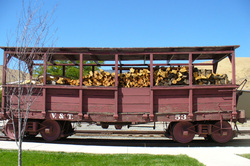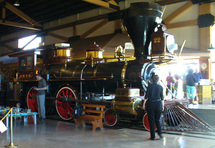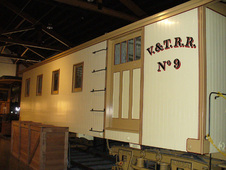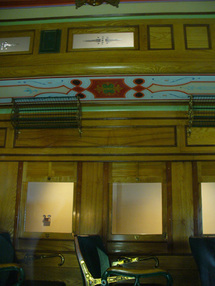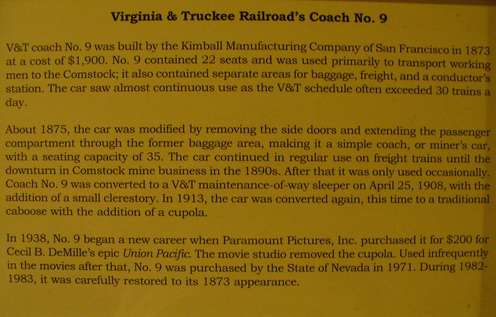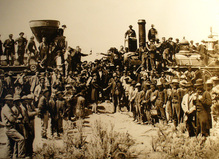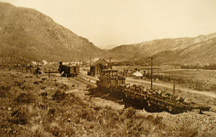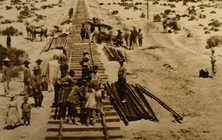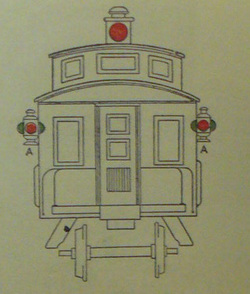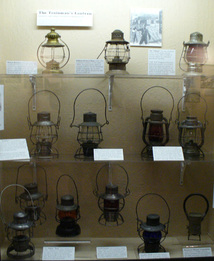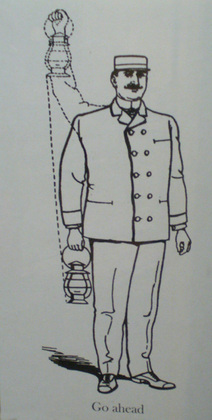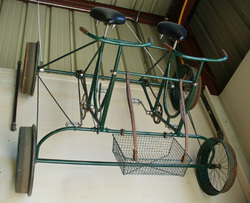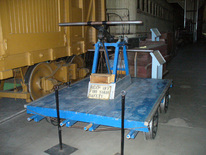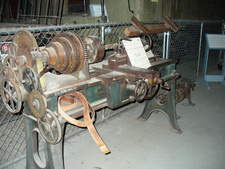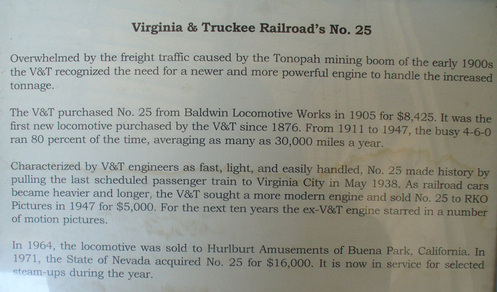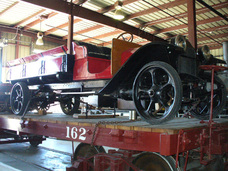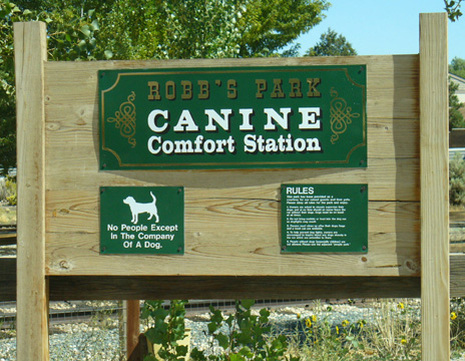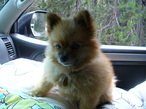Nevada Railroad Museum
After leaving Northern California and a delightful visit with mom's niece, we headed to Reno, Nevada. Mom met a friend of hers there who joined us for the trip to June Lake. While we were in Nevada, we stopped at the Railroad Museum.
There were many interesting things to see in the museum . . . trains, historical pictures, lights, lanterns, tools and equipment. Mom says there were far too many pictures to show it all, but she has included the highlights here.
These two pictures show the Inyo, whose history is shown below.
This is Virginia & Truckee Railroad's Coach No. 9 as restored to its origional state. Below the pictures is the brief history of the coach.
The picture to the right shows the interior of the passenger compartment. You can see the detail work on the overhead panels.
The joining of the Central Pacific and Union Pacific at Promontory Summit, Utah on May 10, 1869.
In building the Central Pacific Line, every piece of metal, including the locomotives, had to be transported from the East Coast to California by ship. Such a journey took about 5 months. Then they were hauled to the end of the line and transported from there by horse and wagon to where the crews were working.

Cowell's Warf, San Fransicso, August 15, 1868.
The ships in the above picture, provided by the Peabody Essex Museum, have just delivered cargos to the Central Pacific from New York.
Cargo headed for the end of the line.
Loading cargo at the end of the line to take to the construction area by horse and wagon.
Switch Lamps, mounted on switch stands, were used to indicate the position of track switches. By changing the direction of the switch, the lamp turns 90 degrees, changing the light that shows along the mailn track.
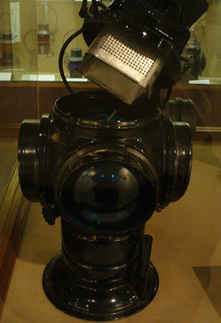
Switch Lamp
Marker lamps were displayed (as shown at left) to prevent rear-end collisions. Red lights face the rear with green lights to the sides and front. When a train was standing on a side track, the lights would be rotated so that the green lights shown to the rear indicating that it was safe to pass.
Some types of Oil Marker Lamps
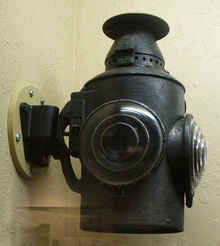
Adams & Westlake's 'Adlake No. 187'
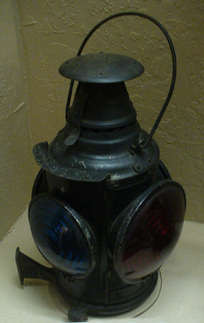
Lovell-Dressel

Adams & Westlake 'Adlake No. 83'

Handlan-Buck No. 79
Classification lights were used on the front of the engine to identify the trains running classification. White indicated an unscheduled or "extra" train. Green meant that a regular scheduled train was divided into two or more sections with another section coming behind.
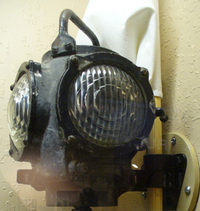
Adlake No. 1154 Electric classification light
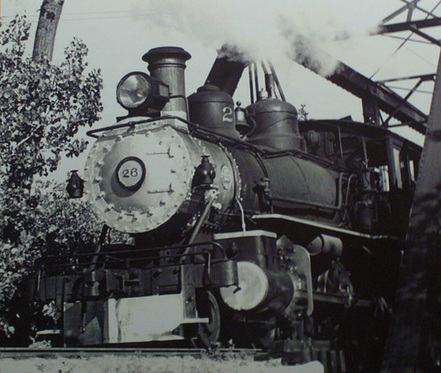
Virginia & Truckee No. 26 at Reno, Nevada May 1949. Fred Matthews photo.
Trainman's Lanterns
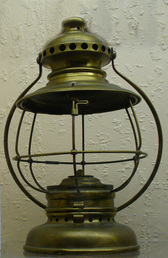
Walton Brothers, 1870's

William Porter's Sons, 1880's
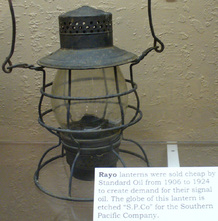
Rayo Lantern by Standard Oil, 1906 - 1924
These lanterns allowed trainmen to communicate at night and also helped them see to walk over uneven ground or along car-tops to set hand brakes.
Train maintenance and shops
Maintaining trains toook a variety of equipment. To the right is a pedicycle, a light track vehicle typically used by maintenance workers. There were many types of workshops: machine, blacksmith, carpentry, and foundries.
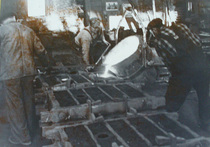
Pouring iron into forms, circa 1936. Addison Millard photo, Duan Bohall collection.

V & T No. 26 in machine shop, 1937. Ted Wurm photo.
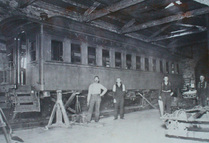
Car Shop, circa 1900, Duan Bohall Collection
Tools common to some of the shops.
In one of the large buildings they had some more locomotives stored and other cars that were in the process of being restored.
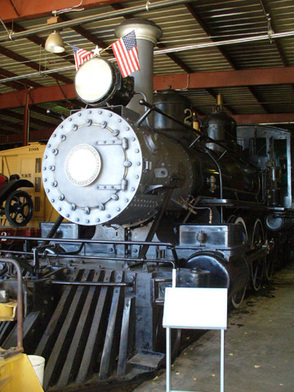
Virginia & Truckee Railroad's No. 25
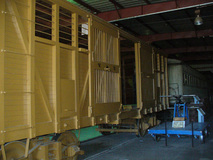
Box car.
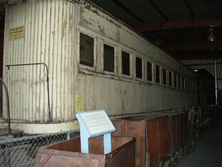
Passenger car.
My personal favorite, after frequently being banned from so many places because I'm a dog, was this . . .
So after all the excitement of touring the railroad museum, we were one the road again! (Which meant I could take a nap!)
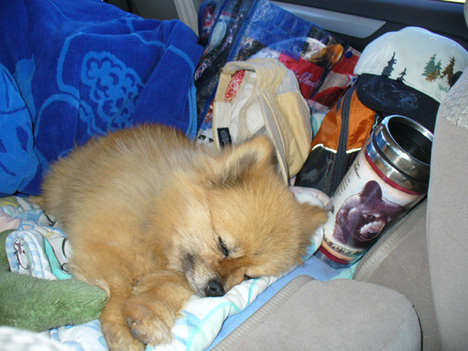
I think I'll dream of being an engineer!
Nevada Links

